A siphon in use is demostrated in the following in siphon is 1.5gm/cc. The pressure differece between the point P and S will be
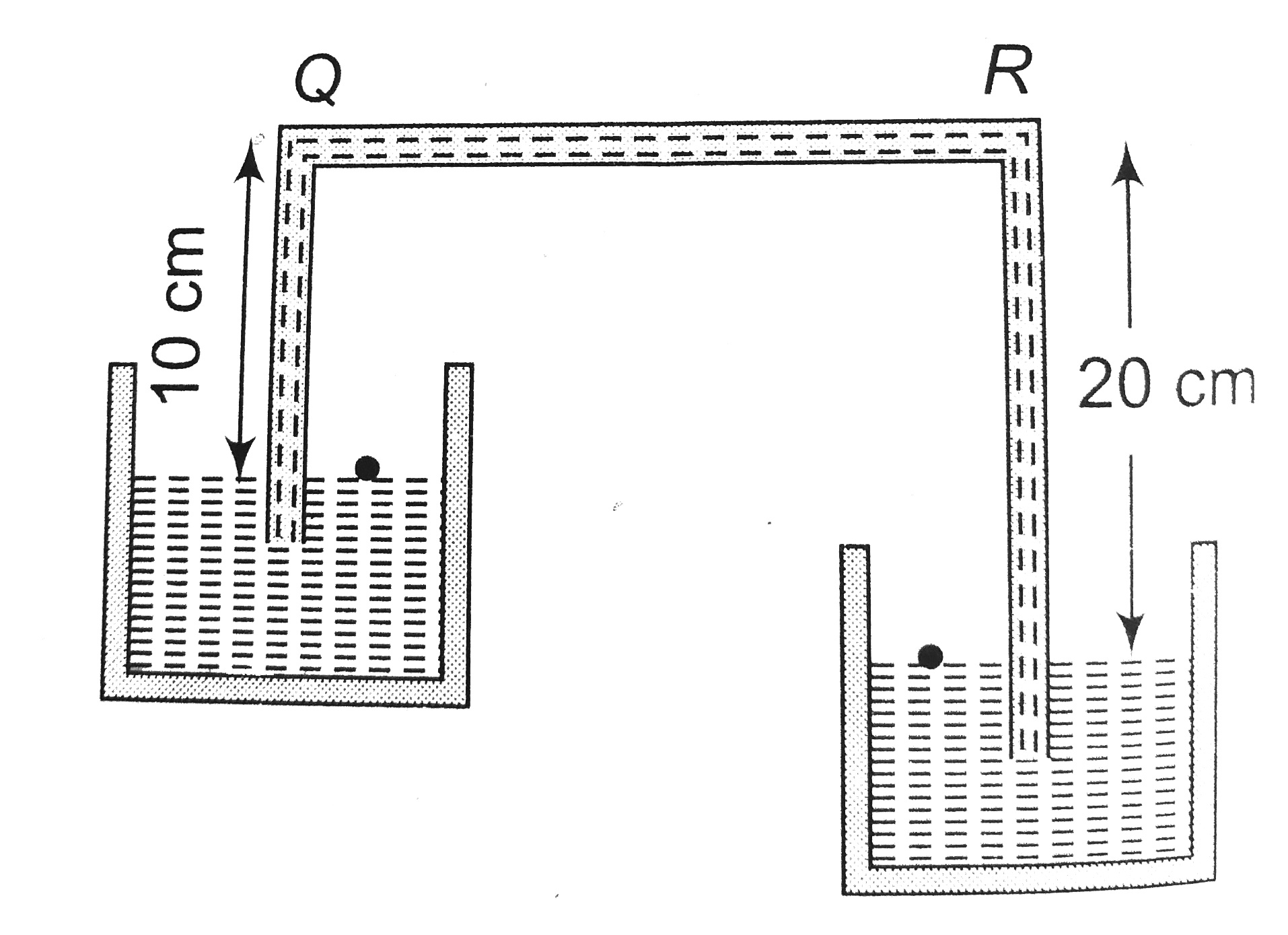
105N/m
2×105N/m
zero
Infinity
The correct Answer is:C
As the both point are at the surface of liquid and these points are in the open atmosphere. So both point possess similar pressure and equal to 1 atm. Hence the pressure difference will be zero.
Topper's Solved these Questions
- FLUID MECHANICSBook:A2ZChapter:FLUID MECHANICSExercise:Problems Based On Mixed Concepts
Explore 29 Videos
- FLUID MECHANICSBook:A2ZChapter:FLUID MECHANICSExercise:Assertion Reasoning
Explore 15 Videos
- FLUID MECHANICSBook:A2ZChapter:FLUID MECHANICSExercise:Continuity Equation And Bernoulli'S Theorem
Explore 32 Videos
- GENERAL KINEMATICS AND MOTION IN ONE DIMENSIONBook:A2ZChapter:GENERAL KINEMATICS AND MOTION IN ONE DIMENSIONExercise:Chapter Test
Explore 30 Videos
Similar Questions
Figure shows a siphon. The liquid shown in water. The pressure difference PB−PA between the points A and B is
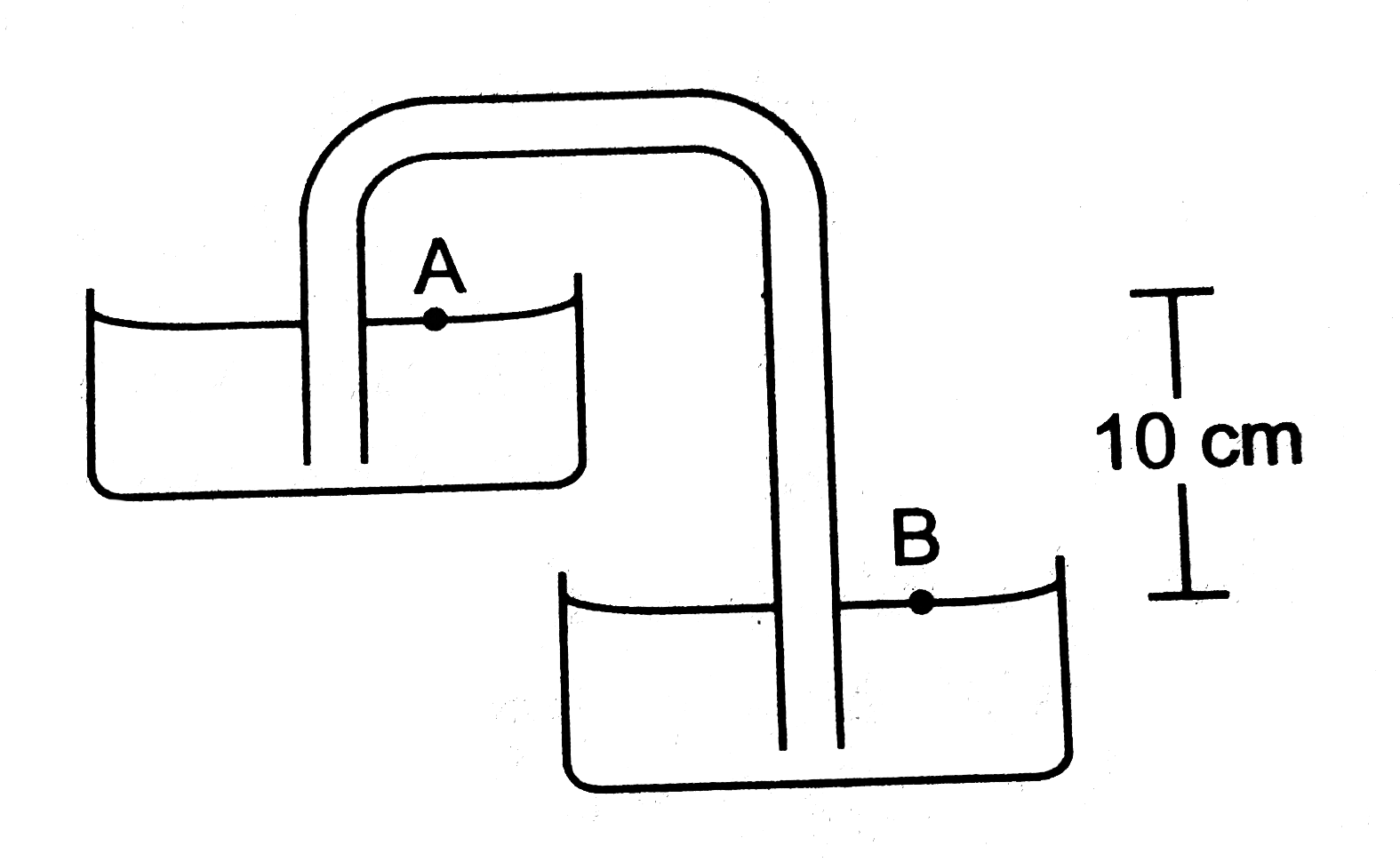
View SolutionThe figure shows a siphon in action. The liquid flowing through the siphon has a density of 1.5gm/cm3. Calculate the pressure difference between
(a) Points A and D,
(b) Points B and C
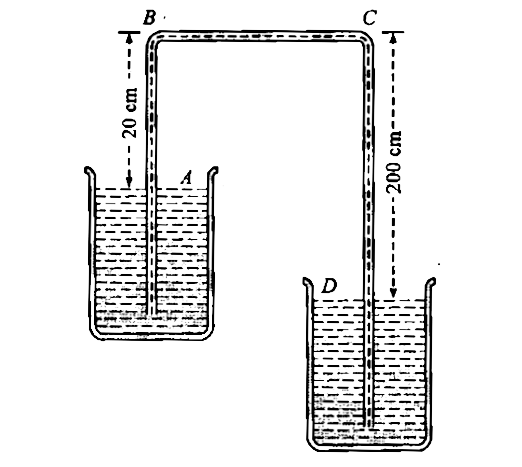
View Solution
Knowledge Check
A tube of uniform cross section is used to siphon water from a vessel V as shown in the figure. The pressure over the open end of water in the vessel is atmospheric pressure (P0). The height of the tube above and below the water level in the vessel are h1 and h2, respectively.
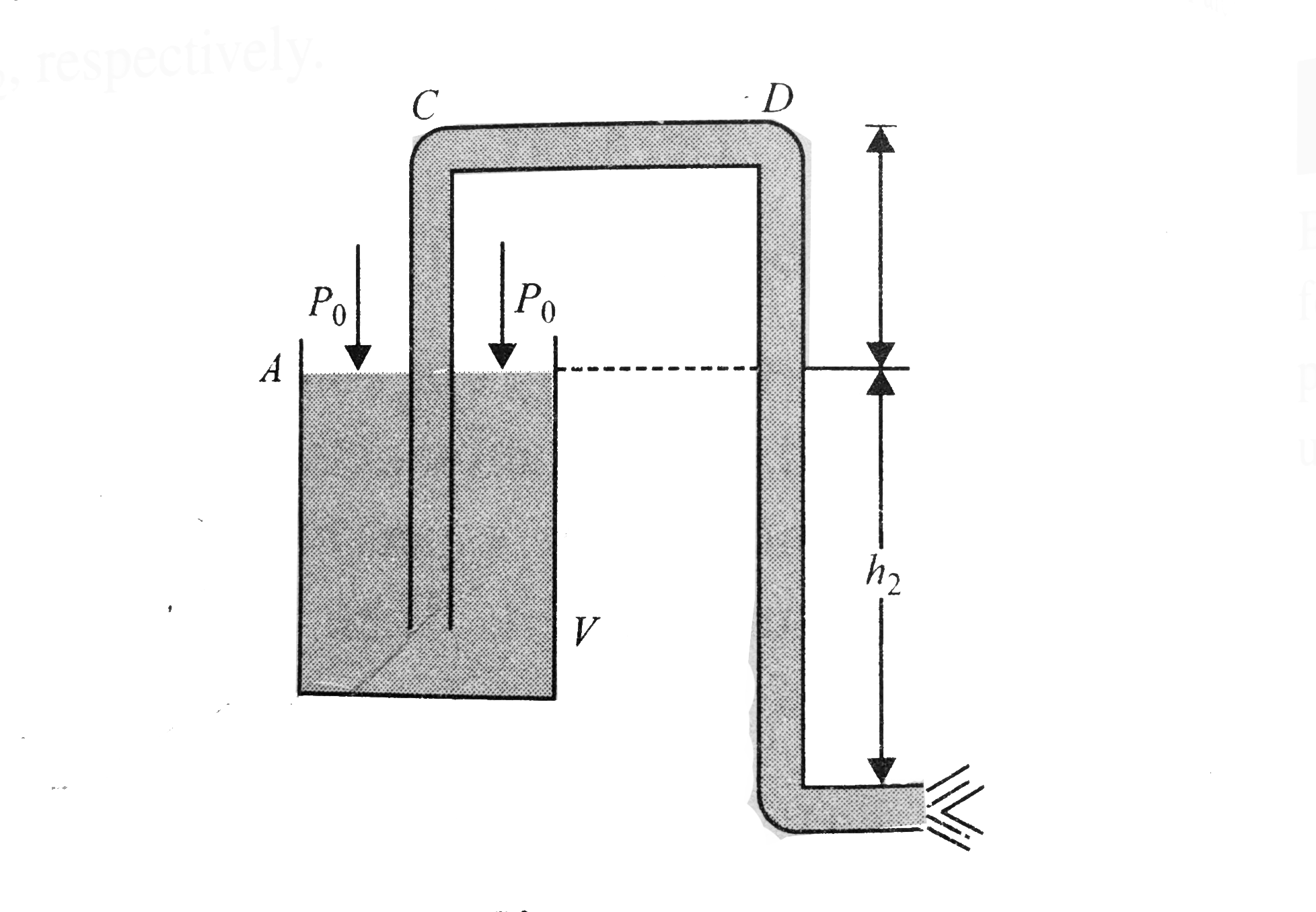
If h1=h2=3.0m, the maximum value of h1, for which the siphon will work will beA3.0mB6.0mC7.2mD4.8mA tube of uniform cross section is used to siphon water from a vessel V as shown in the figure. The pressure over the open end of water in the vessel is atmospheric pressure (P0). The height of the tube above and below the water level in the vessel are h1 and h2, respectively.
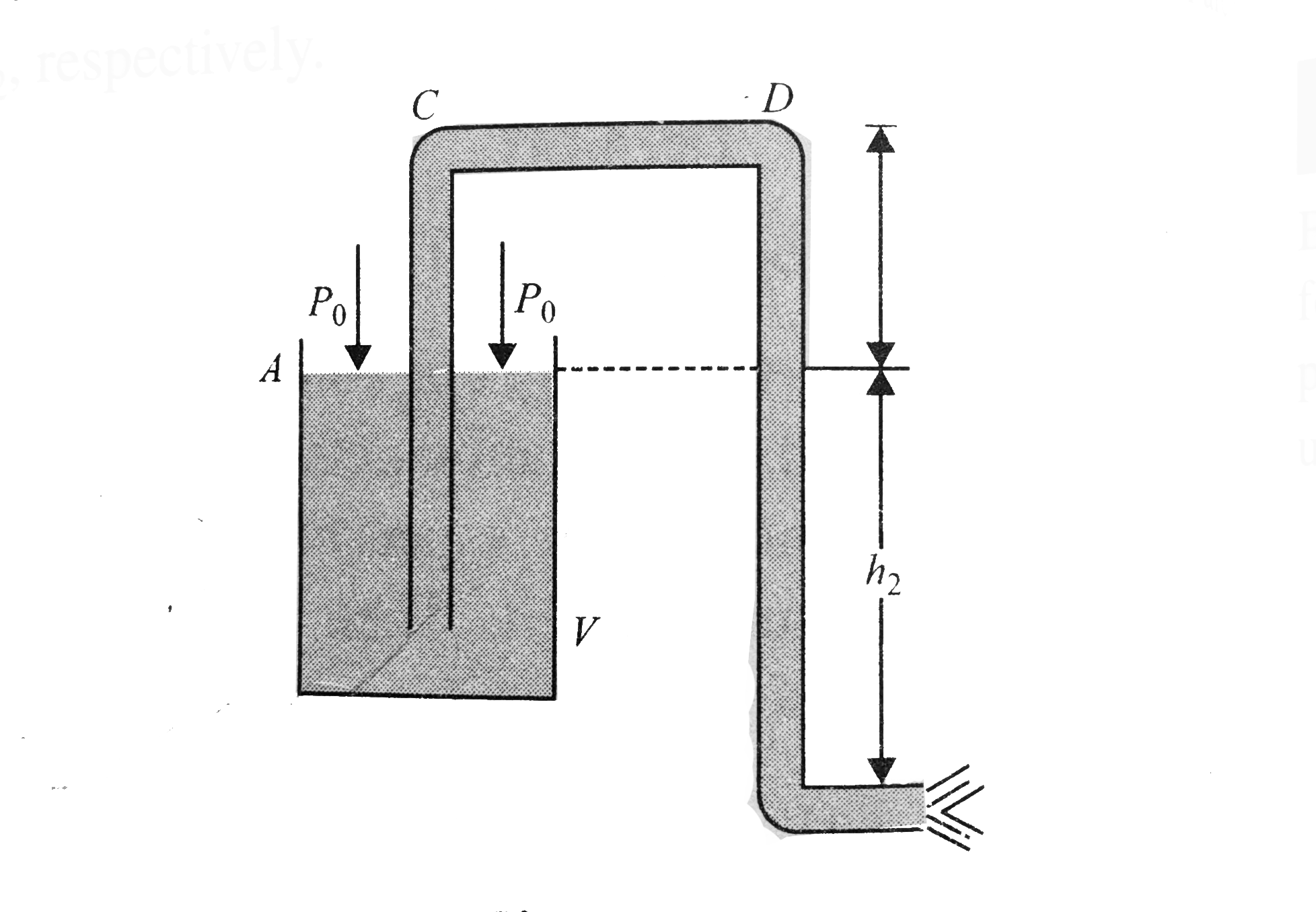
Given h1=h2=3.0m, the gauge pressure of water in the highest level CD of the tube will beA3.0×104N/m2B5.9×104N/m2C5.9×104N/m2D1.5×104N/m2A tube of uniform cross section is used to siphon water from a vessel V as shown in the figure. The pressure over the open end of water in the vessel is atmospheric pressure (P0). The height of the tube above and below the water level in the vessel are h1 and h2, respectively.
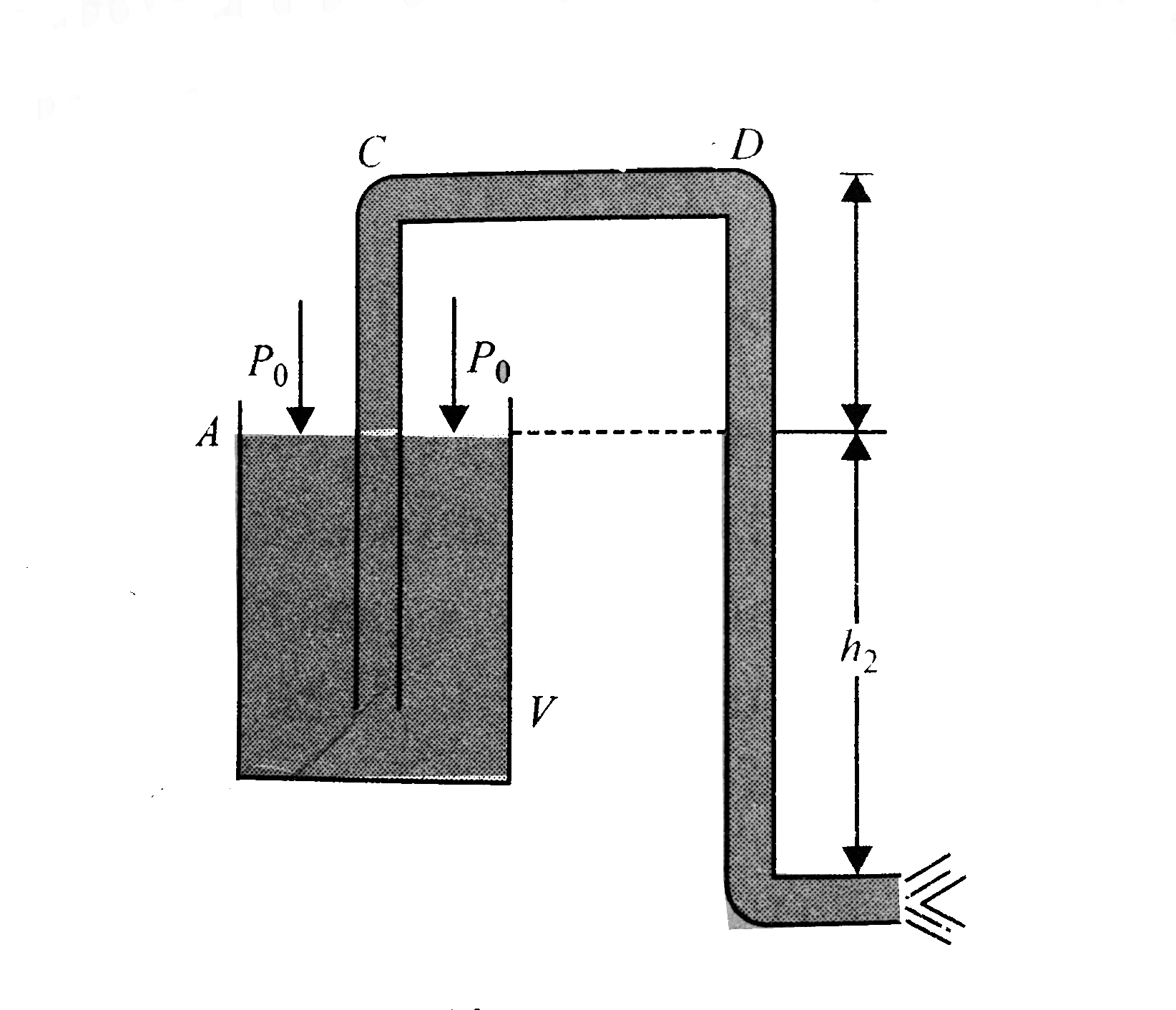
Determine the velocity vB of the water issuing out at B.AvB=√2gh2BvB=√2h(h1+h2)CvB=√2h(h2−h1)DvB=√gh2
In the circuit shown in fig. calculate the following:
a. Potential differece between points a and b when switch S is open.
b.Current through S in the circuit
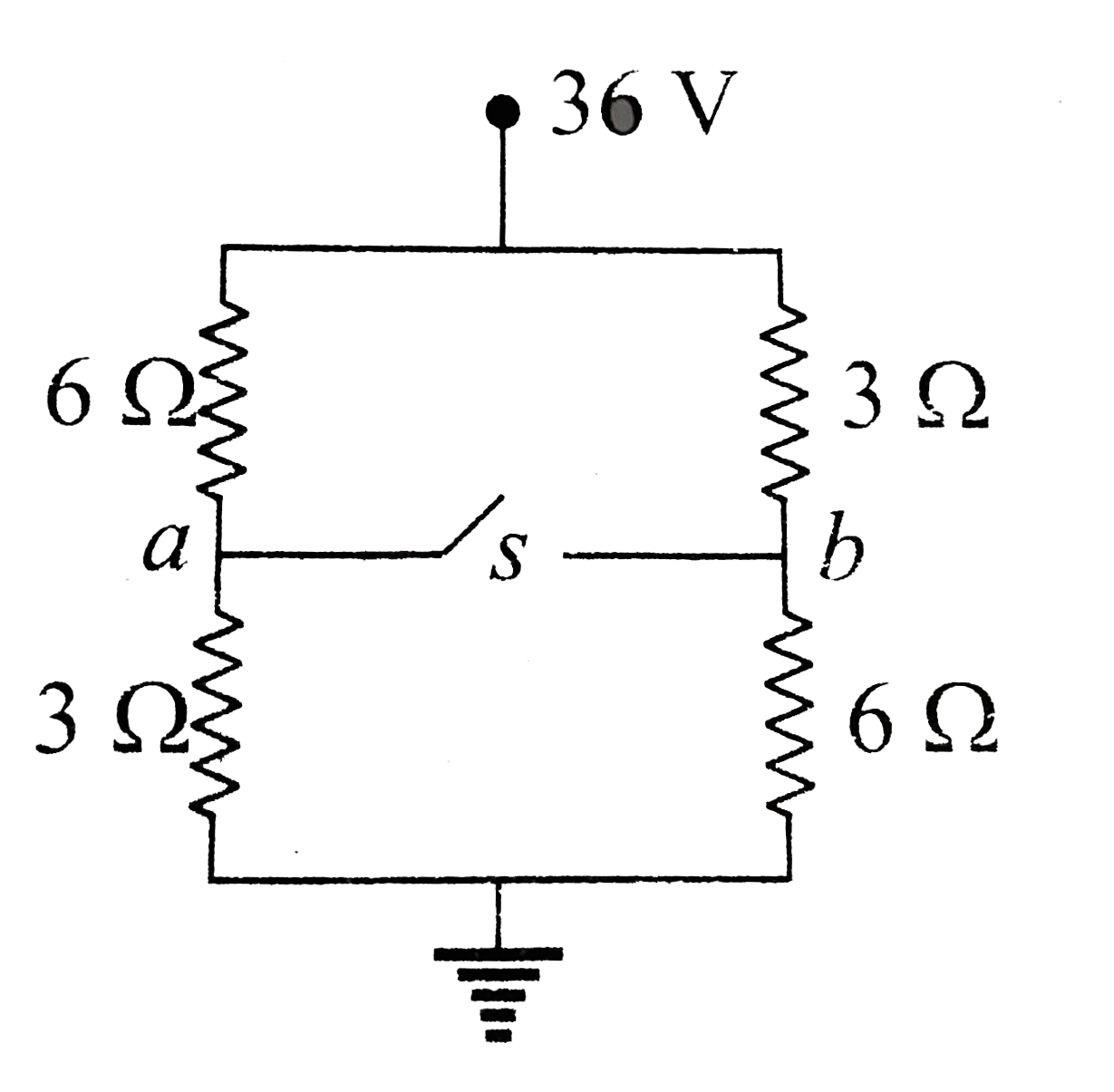
View SolutionA siphon tube is discharging a liquid of specific gravity 0.9 from a reservoir as shown in the figure.

(a) Find the velocity of the liquid through the siphon.
(b) Find the pressure at the highest point B.
(c ) Find the pressure at point C.
View SolutionA siphon tube is used to remove liquid from a container as shown in fig. In order to operate the siphon tube, it must initially be filled with the liquid.
(i). Determine the pseed of the liquid through the siphon.
(ii). Determine the pressure at the point C.
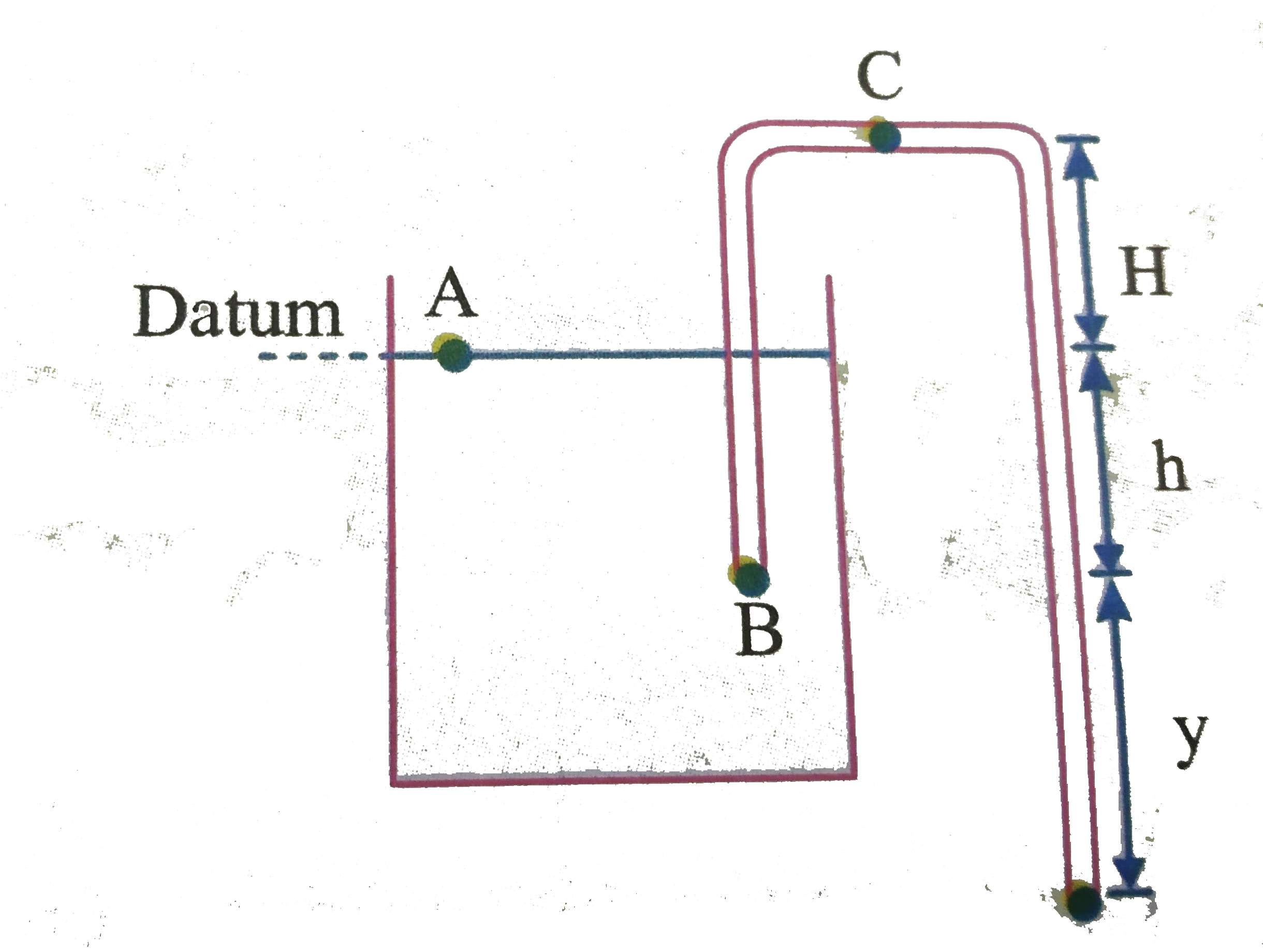
View SolutionIf the distance between the points (4, p) and (1, 0) is 5, then p= ±4 (b) 4 (c) −4 (d) 0
View SolutionAssertion: In the siphon shown in figure, pressure at P is equal to atmospheric pressure

Reason: Pressure at Q is atmospheric pressure and points P and Q are at same levels.
View Solution

